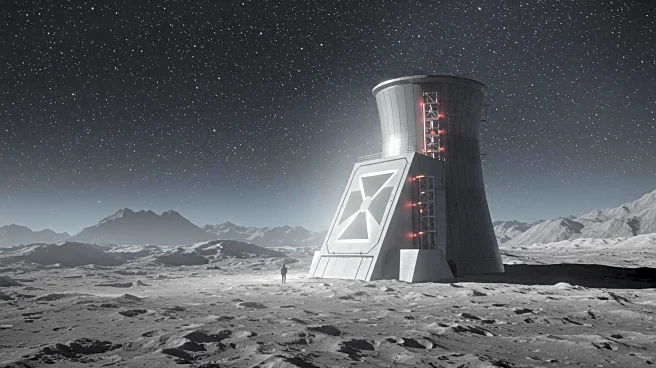What's Happening?
NASA, under the leadership of interim administrator Sean Duffy, has announced plans to deploy a nuclear reactor on the Moon by 2029. This initiative is part of a strategic response to the growing space ambitions of China and Russia. The project aims to generate at least 100 kilowatts of electricity, sufficient to power approximately 80 American households. NASA has been given 30 days to appoint a project leader and 60 days to issue a request for proposals from private companies. The involvement of private entities is crucial, as NASA seeks to leverage their expertise in nuclear technology, space exploration, and engineering. This collaboration marks a shift towards a more integrated approach to space exploration, combining public ambition with private ingenuity.
Why It's Important?
The deployment of a nuclear reactor on the Moon is significant for several reasons. It represents a strategic move by the United States to maintain its leadership in space exploration amidst increasing competition from China and Russia. Establishing a presence on the Moon is crucial for maintaining international influence and could redefine power dynamics in space. The project also highlights the intersection of science, politics, and national security, as space becomes an arena for geopolitical competition. Technologically, the initiative could pave the way for sustainable lunar bases, providing a reliable energy source for future missions and long-term colonization efforts. The success of this project could set a precedent for future partnerships between government and industry.
What's Next?
NASA's next steps involve appointing a project leader and issuing a request for proposals from private companies within the given deadlines. The agency must address technological challenges such as radiation shielding, heat dissipation, and the reactor's ability to withstand the Moon's extreme conditions. The logistics of transporting and assembling the reactor on the lunar surface are complex, requiring collaboration across various sectors. As NASA moves forward, the world will be watching to see if the United States can maintain its leadership in space exploration or if the balance of power will shift. The outcome of this initiative could influence the trajectory of space exploration for decades to come.
Beyond the Headlines
The push for a lunar reactor is deeply intertwined with global strategic interests. As space becomes an arena for geopolitical competition, establishing a presence on the Moon is seen as crucial for maintaining international influence. The United States aims to reinforce its position by spearheading this pioneering project. Both China and Russia have made significant strides in their space programs, with lunar missions that could potentially yield strategic advantages. By accelerating its own lunar activities, the U.S. seeks to counterbalance these efforts and ensure that it remains at the forefront of space exploration. This move is not just about technological advancement; it is also a statement of intent in the international arena.











